The National Historical Museum of Athens is located in the Old Parliament House on Stadiou Street, a five-minute walk from Syntagma Square.
The museum offers a fascinating glimpse into Greece’s journey from the Fall of Constantinople and the Latin period to WWII and the modern Greek state.
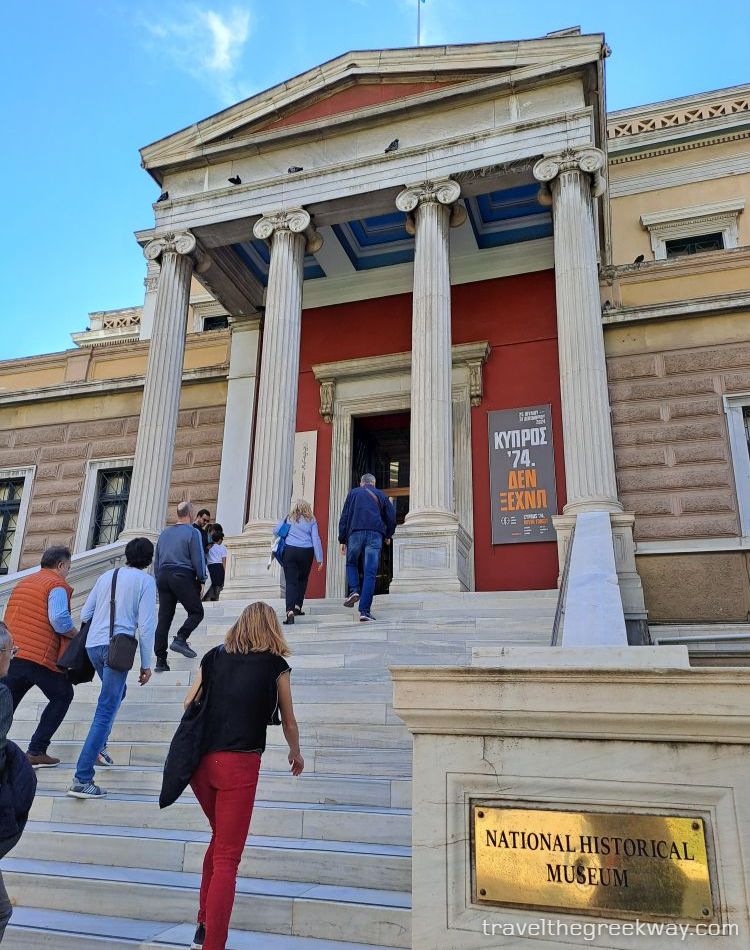
I recently visited the museum for the first time and was amazed by its many impressive exhibits, some of which are quite rare.
However, what truly fascinated me was the stunning chamber of the Old Hellenic Parliament.
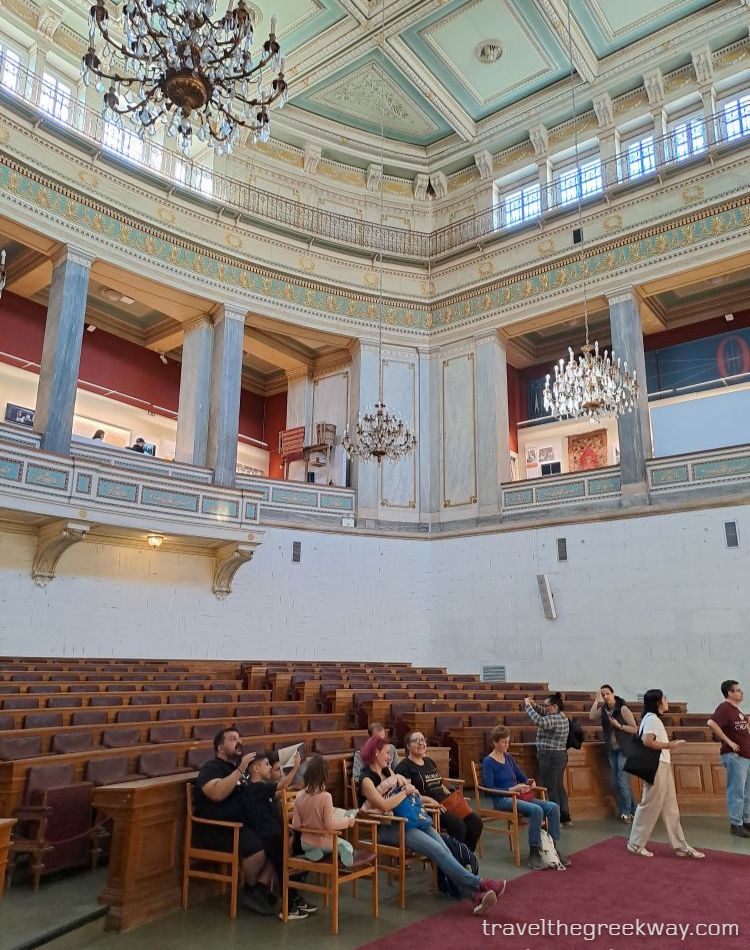
In this post, you will find the most important information you need to know before you visit the National Historical Museum of Athens.
Travel the Greek Way is an Amazon Associate and participant in other affiliate programs. I earn from qualifying purchases. Please see my disclaimer/privacy policy for more information.
A Historic Building with a Story to Tell
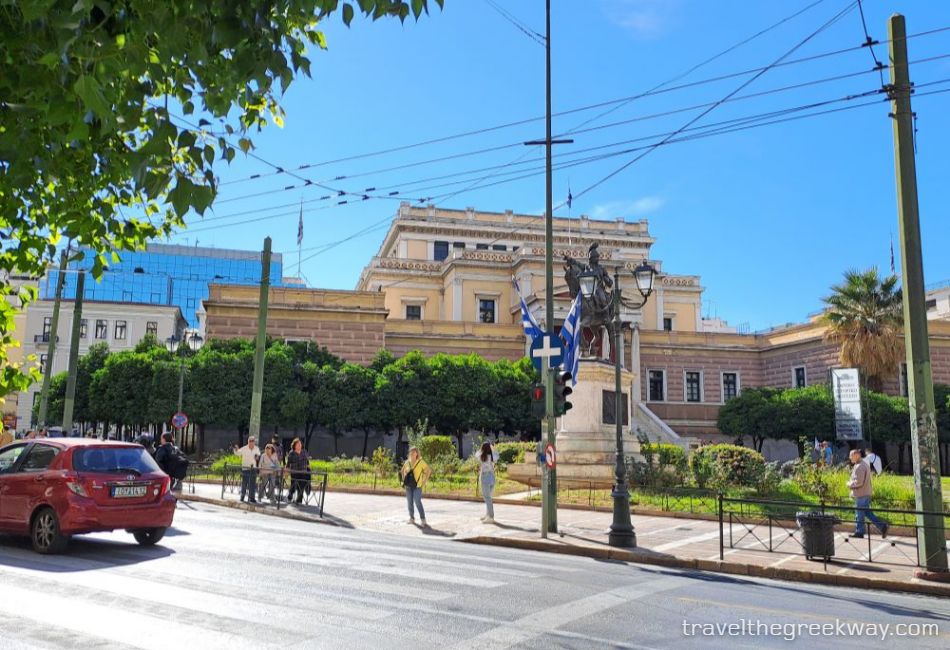
The National Historical Museum of Athens has been housed in the Old Parliament Building since 1960. Before that, the building served as the Greek Parliament from 1875 to 1935.
The Museum was founded in 1882, and its original collections were donated by the same families that had played a primary role in the Greek War of Independence in 1821.
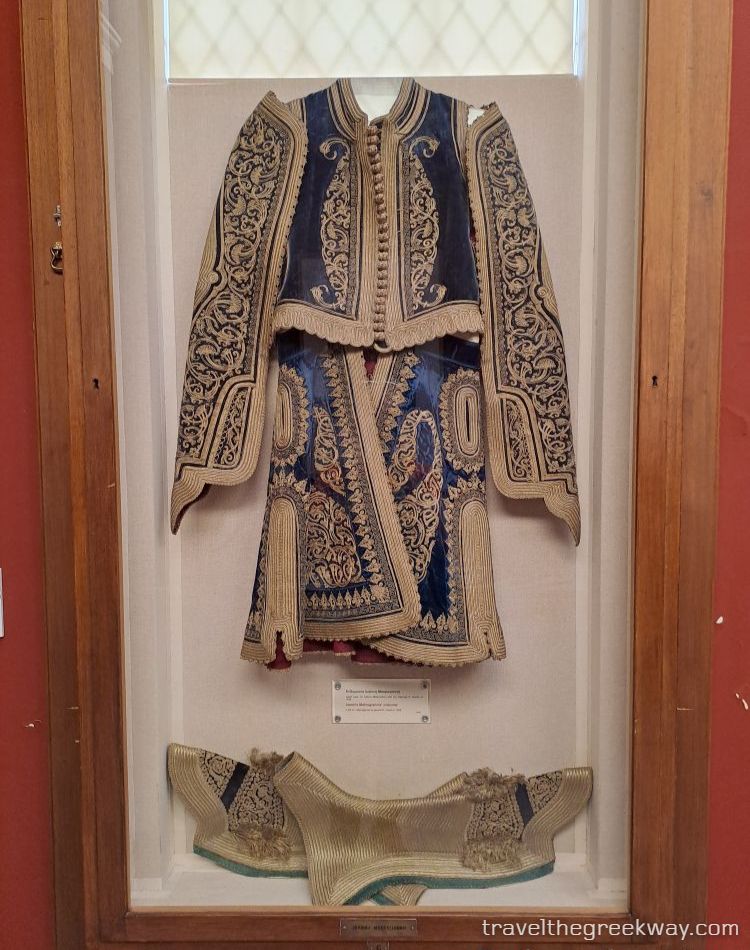
It continued enriching its collections through trips to the Greek territory and also in areas where there used to be a large core of Greek people, such as Constantinople, Asia Minor, and Alexandria.
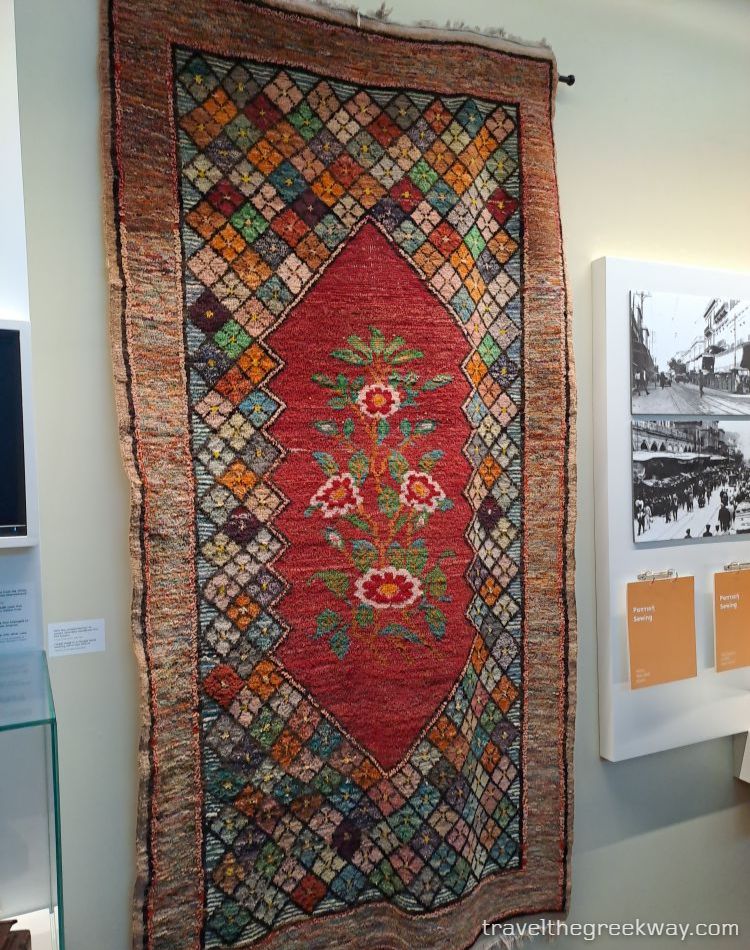
During the Second World War, the precious items were packaged and hidden in the basements of Athens’ universities and private rooms. The same happened with the items in the National Archaeological Museum.
The Lazaros Koundouriotis Historic Residence has operated as part of the National Historical Museum on Hydra Island since 2001.
The Collections of the Historical Museum of Athens
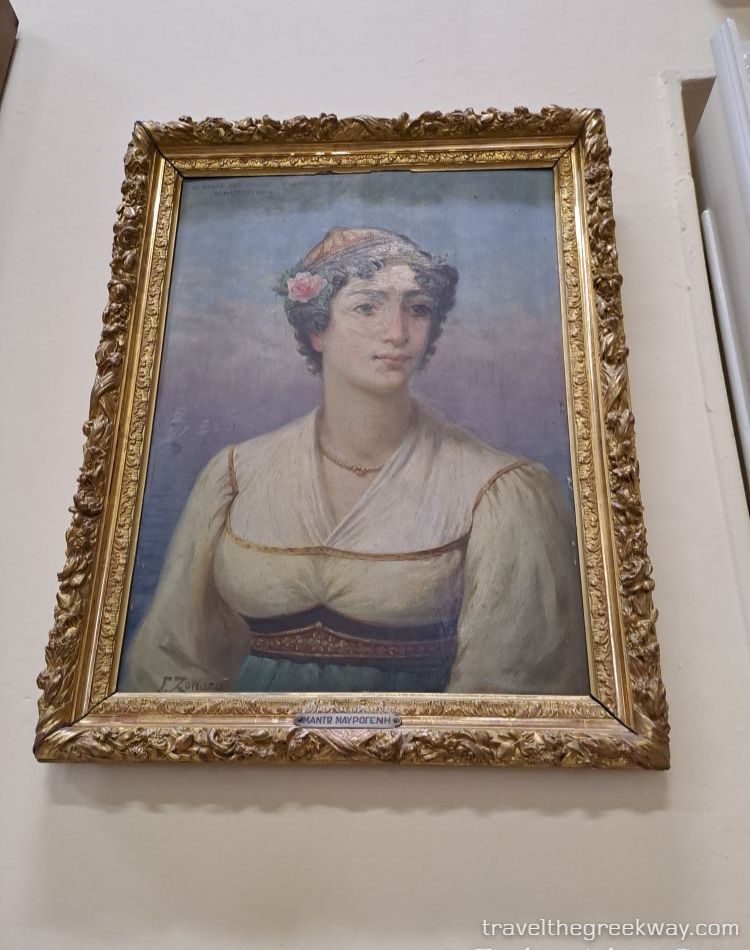
The museum’s extensive collection spans several centuries, but these are the ones that I really loved:
- Artifacts from the Greek War of Independence (1821-1830): Weapons, uniforms, and personal belongings of key figures like Theodoros Kolokotronis and Lord Byron.
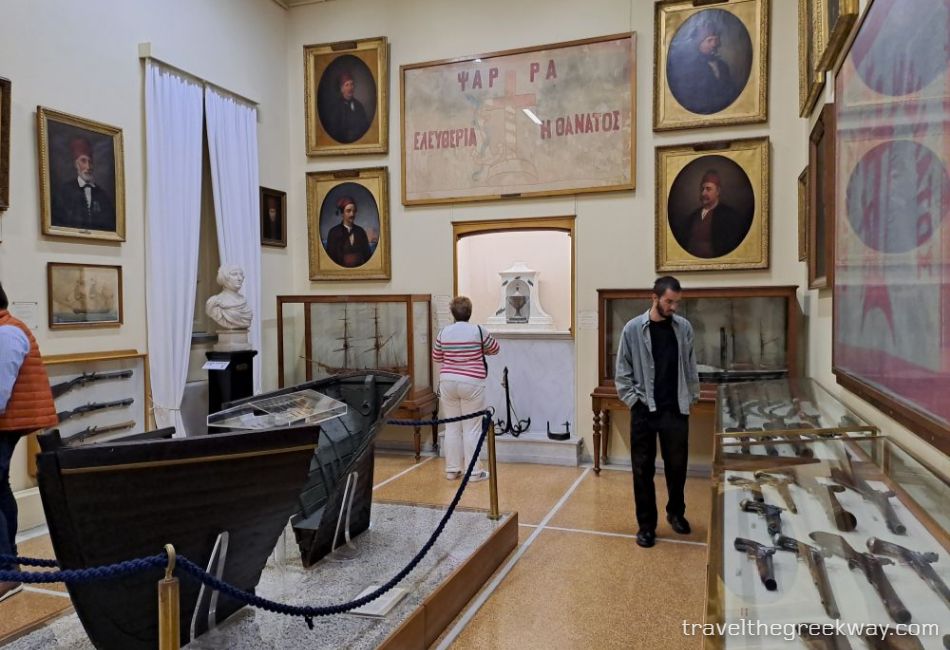
- Historical Documents & Manuscripts: Rare letters, treaties, and original texts that shaped modern Greece.
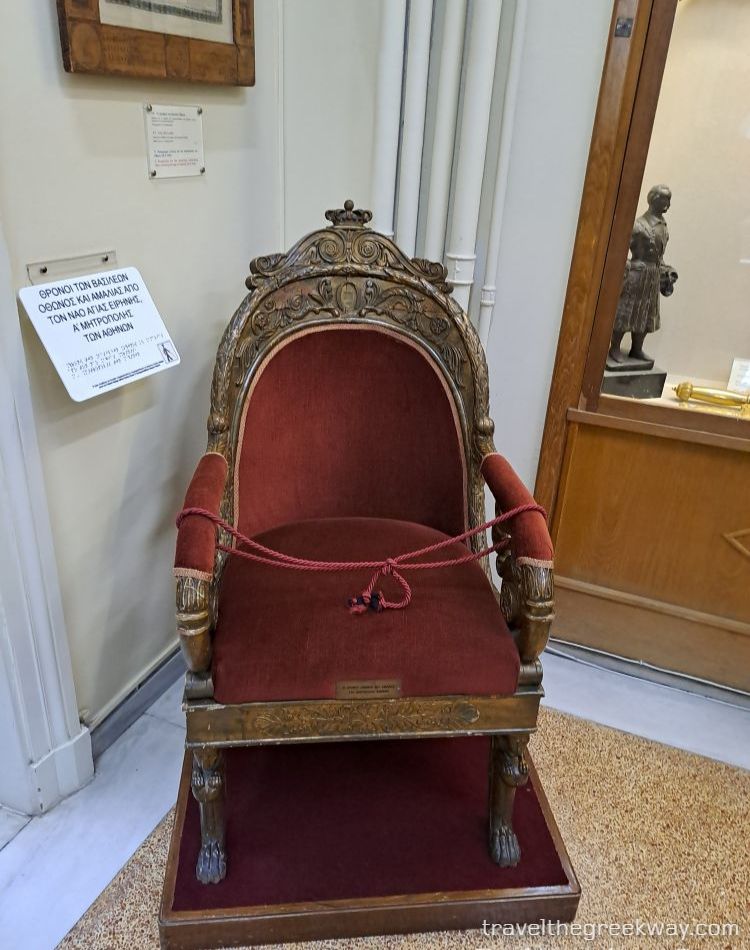
- Kings Otto and George I Items: The throne used by King Otto (1833-1862) and later by George I (1863-1913), wedding crowns, and beautiful costumes for the Ladies in Waiting of Queen Olga.
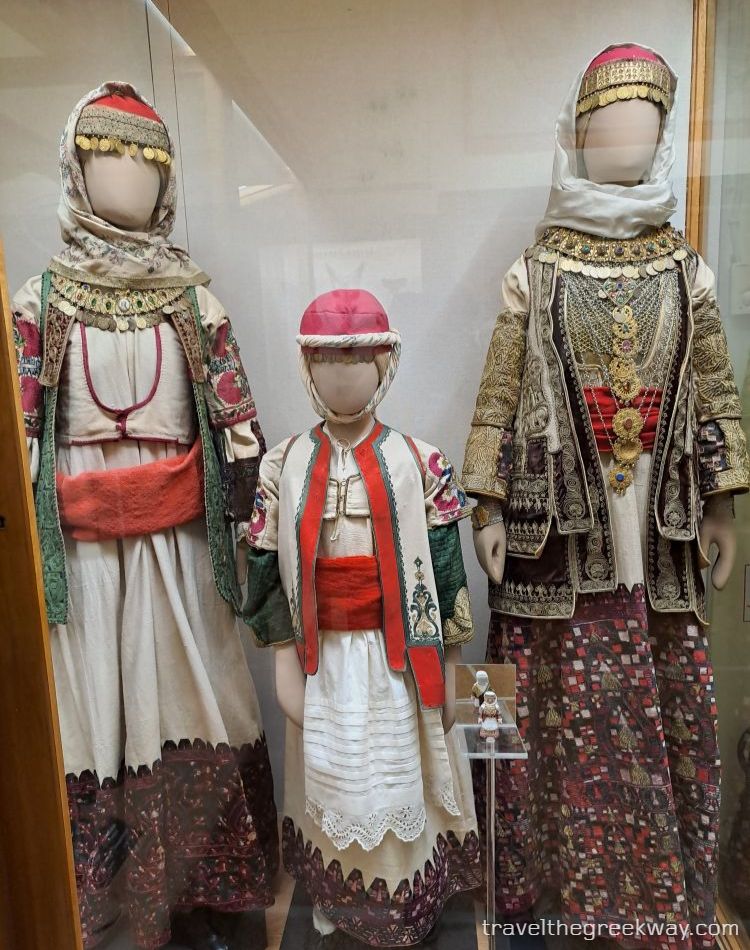
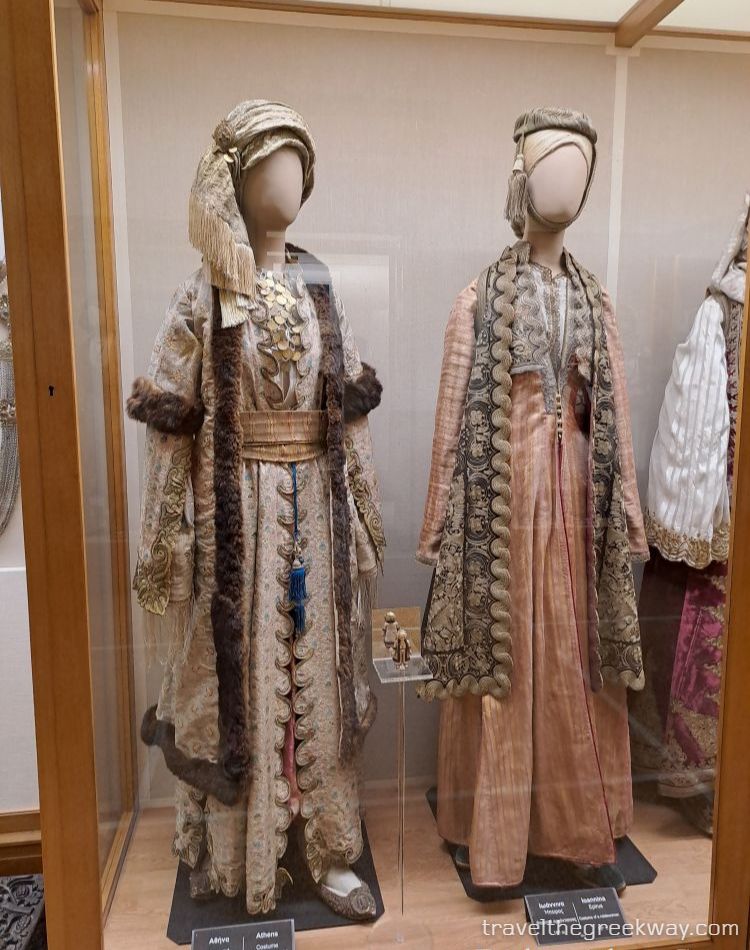
- Traditional Costumes: A stunning collection of regional attire from different parts of Greece and folk art items.
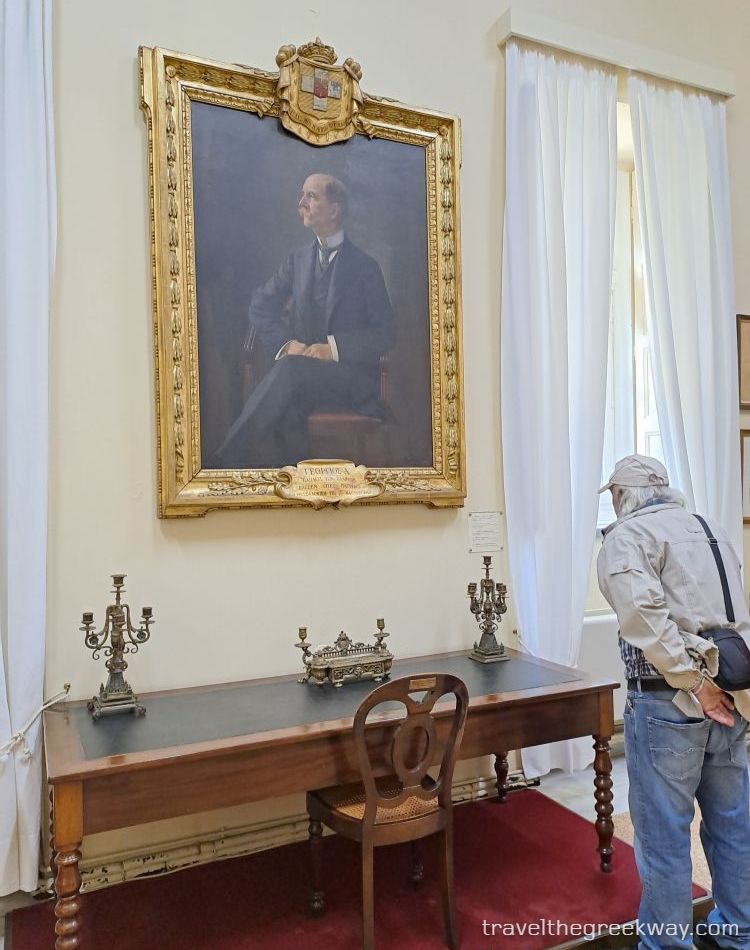
- Paintings & Engravings: Artistic depictions of major historical events and famous personalities.
Most of the exhibition, spread across three halls and connecting corridors, focuses on the Greek War of Independence in 1821.
You’ll find portraits of key revolutionaries, along with exhibits that highlight different aspects of the struggle—naval battles, Philhellenism, the role of the clergy, and the famous Exodus of Messolonghi.
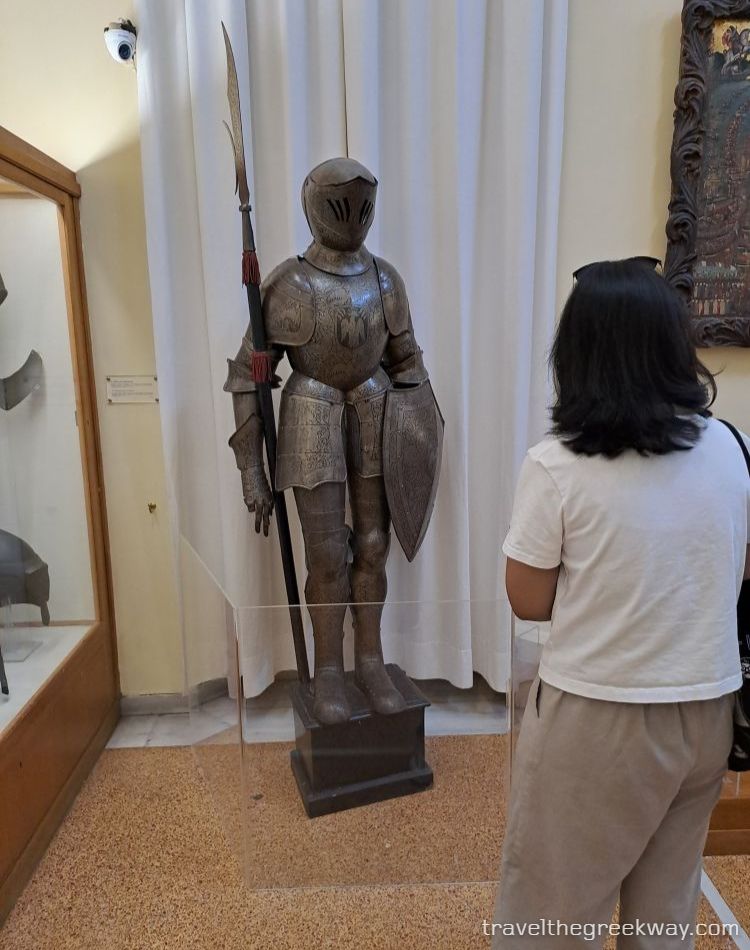
There are also plenty of items from the Latin period of Greece.
Between 1204 and 1566 — or in some regions as late as 1669 or even 1797, marking the final end of Latin rule in the Greek world — power shifted among a variety of Western lords:
Franks/Burgundians, Flemings, Genoese, Lombards, Venetians, Catalans, Florentines, Navarrese, and the Knights Templar or Hospitallers.
Top Exhibits Not to Miss
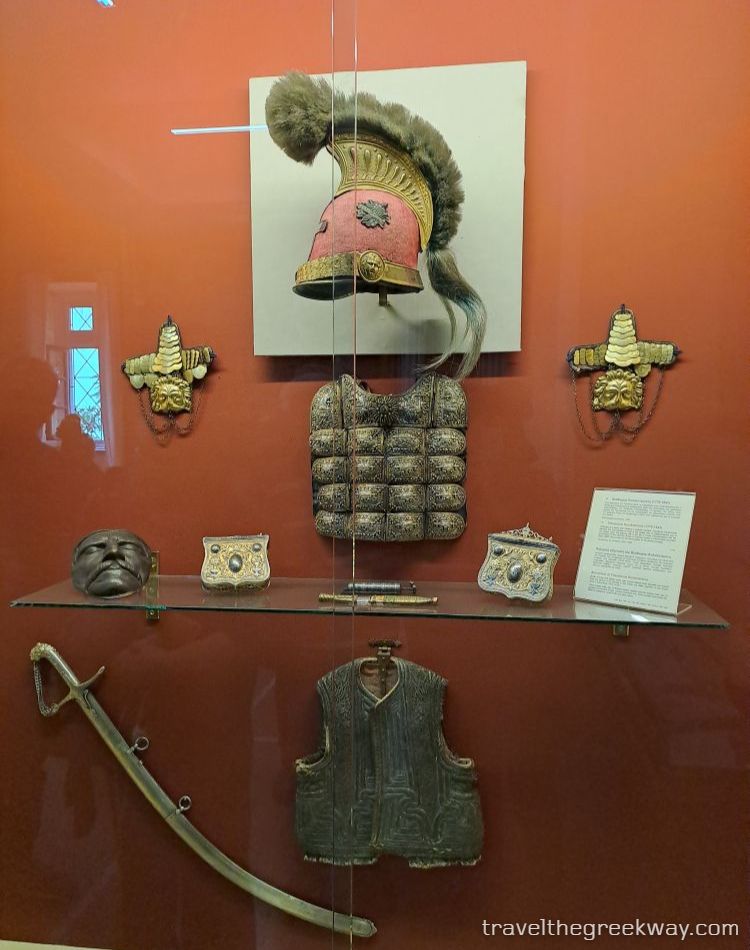
The Sword of Theodoros Kolokotronis: Kolokotronis (1770-1843) was a general and the most important leader of the Greek War of Independence against the Ottoman Empire.
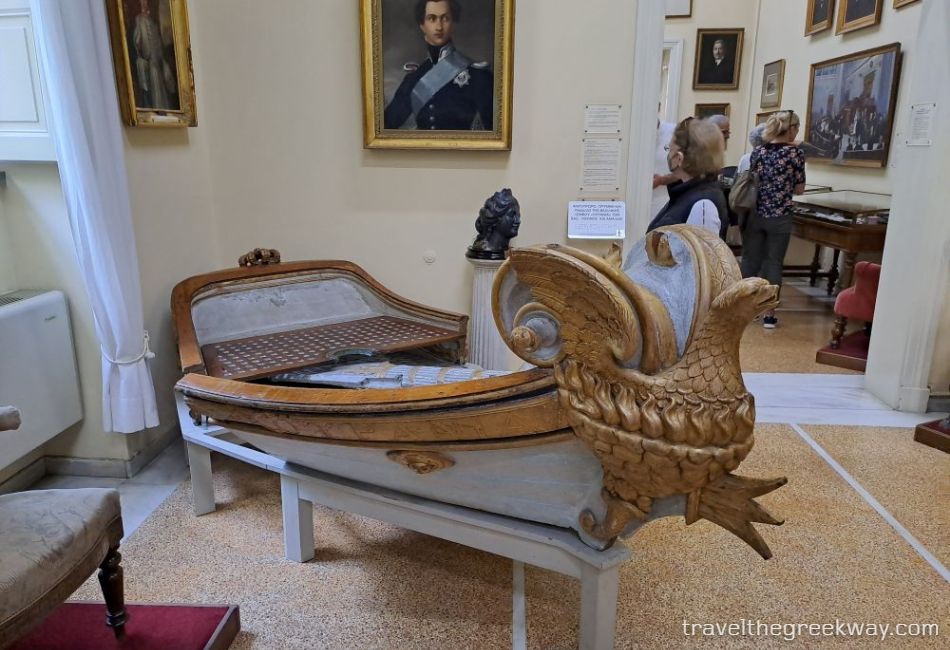
The Greek Flag from the Battle of Navarino, which occurred on October 20th, 1827, in Navarino, western Peloponnese.
A powerful naval force from the British, French, and Russian fleets sank the ships of the Ottoman and Egyptian fleets, providing a crucial boost to the Greek Revolution, which had been struggling to survive.
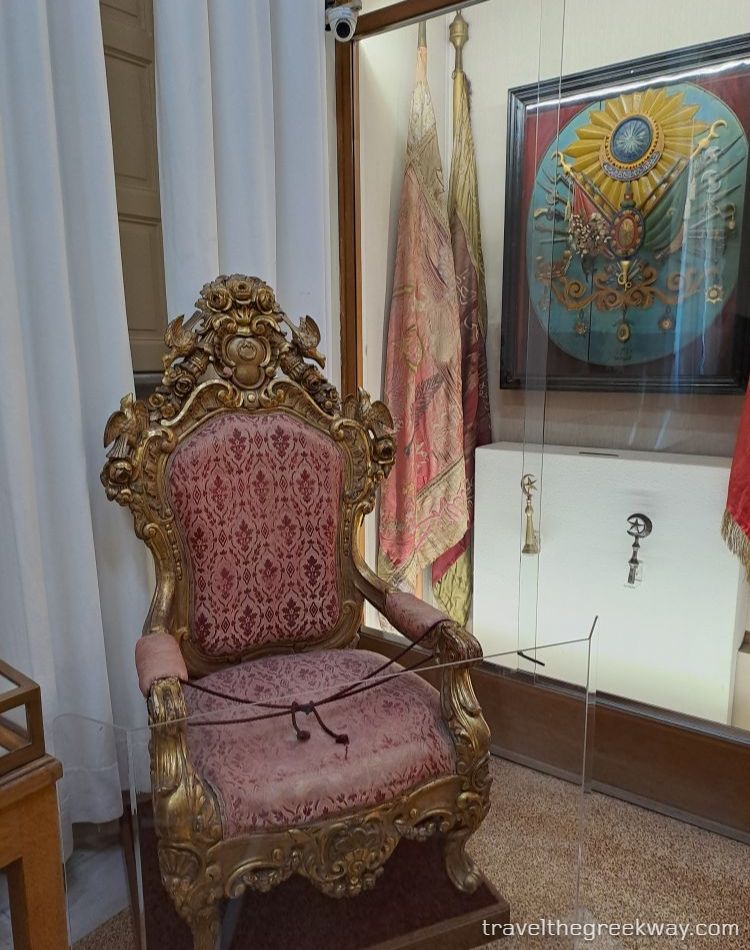
The throne of Sultan Abdul Hamid II (1842-1918), the Last Sultan of the Ottoman Empire.
Personal Items of Greek Leaders: Such as the pocket watch of Ioannis Kapodistrias, the first governor of Greece.
Old Parliament House
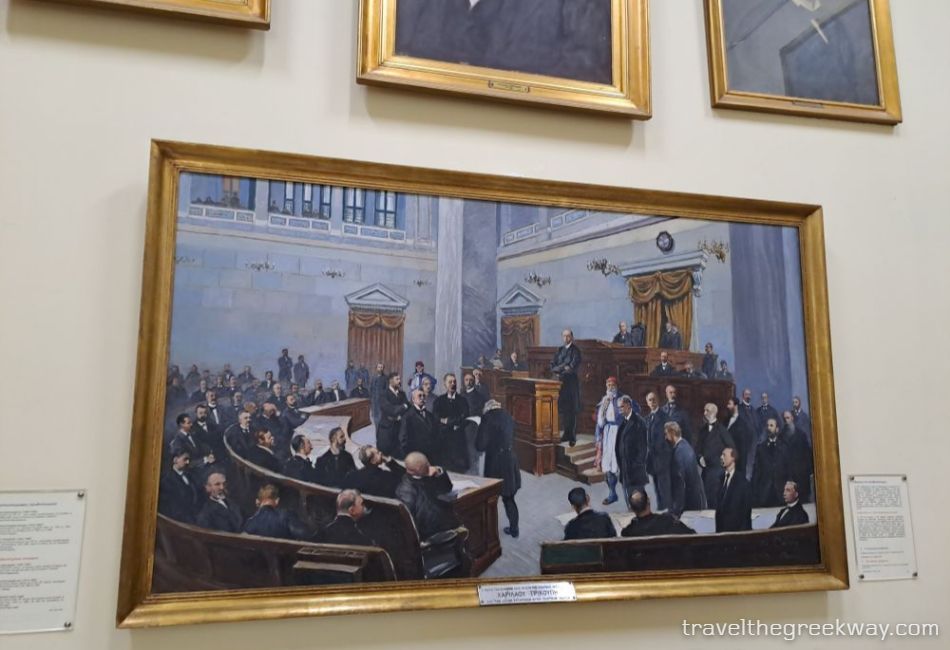
The Old Parliament was established in 1858 by Queen Amalia, designed by French architect François Boulanger, to serve as the home of the Parliament and Senate.
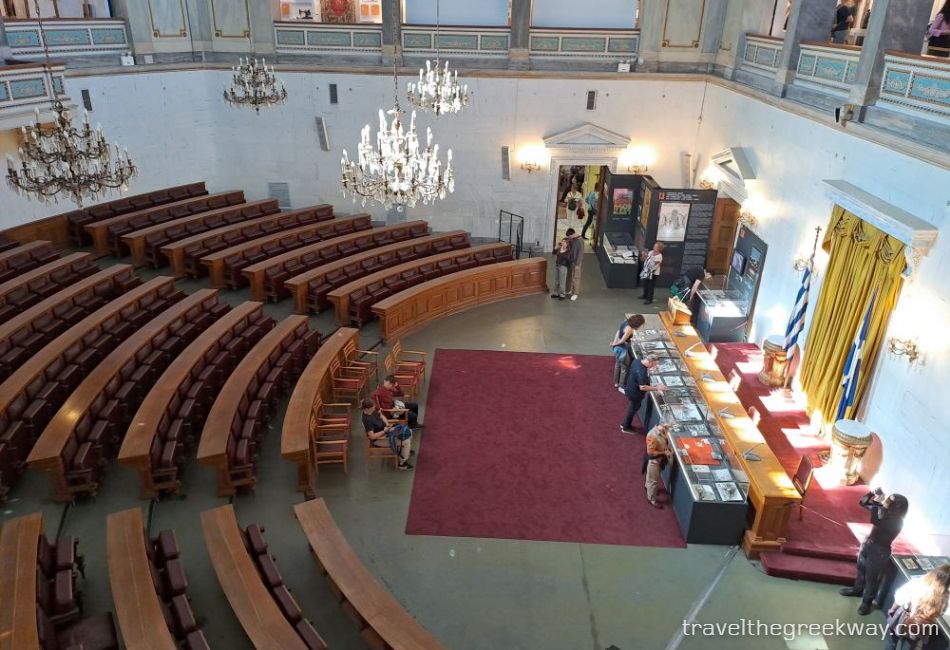
It was completed in 1875 and for the next 60 years was the center of the country’s turbulent political affairs.
In 1935, the Parliament moved to the Former Palace on Syntagma Square, where it is still housed today.
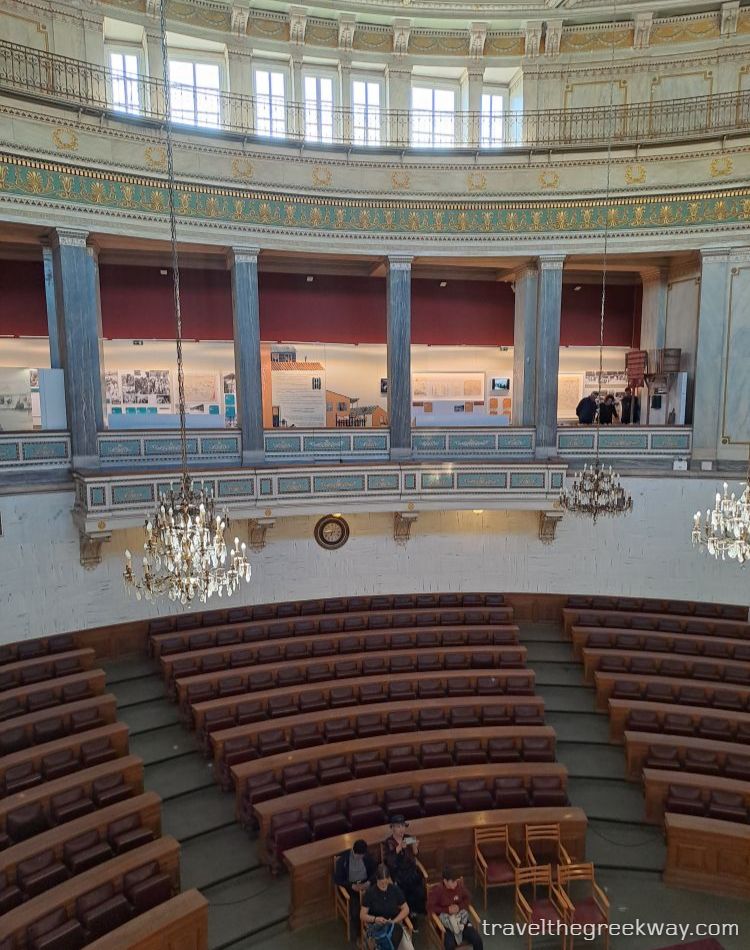
Prime Minister Eleftherios Venizelos decided to hand over the Old Parliament building to the Historical and Ethnological Society of Greece to create the National Historical Museum. However, the plan was delayed because of the war.
You can visit the Central Hall of the Assembly as well as the surrounding supporting rooms that host the permanent exhibitions of the museum.
FAQs about the Historical Museum
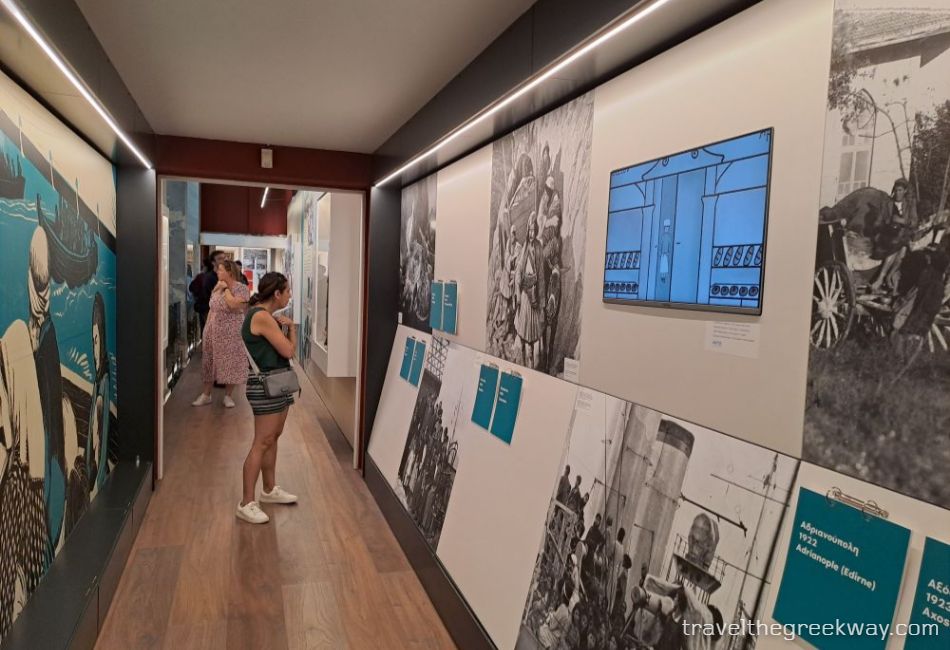
How Big is the Museum? How Long Should You Plan to Spend?
It has two floors. The top floor is dedicated to modern Greece (after 1900). You’ll need at least an hour to explore the exhibits at a fast pace. If you enjoy reading all the signs, set aside at least two hours.
How Much Does the Entrance Ticket Cost?
Permanent exhibitions: 10 €, reduced 5 €.
Temporary exhibitions: general admission 10 €, reduced 5 €
Combined admission: general 15 €, reduced 8 €
Free admission: 1st Sunday of the month (November-February), March 25, May 18, October 28.
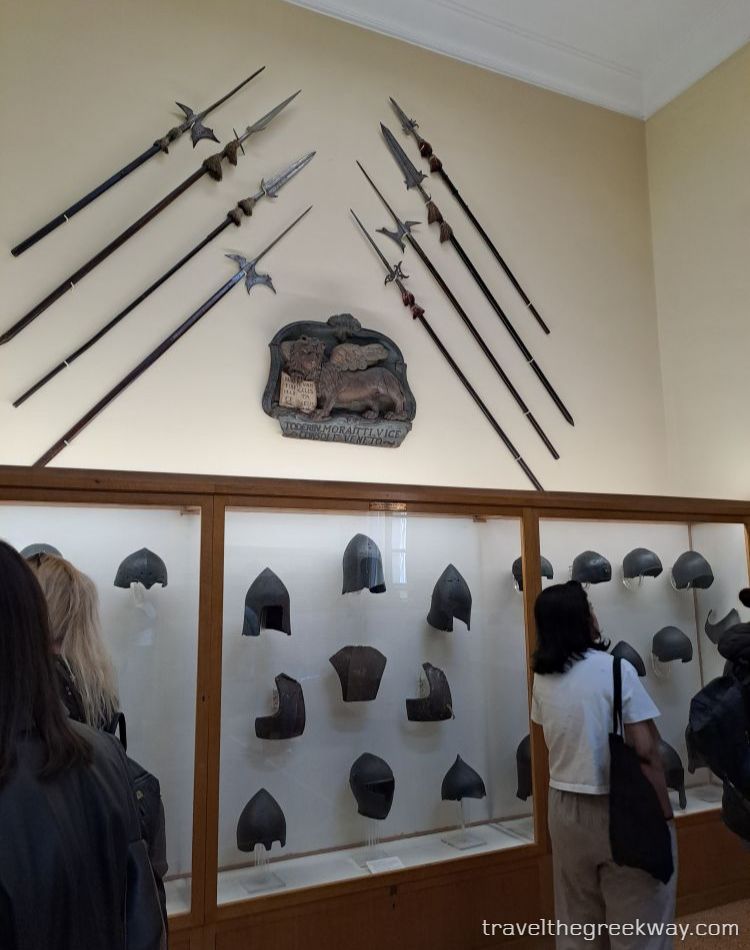
What Are the Museum’s Hours, and Is It Open Every Day?
It is closed on Mondays. It is open between 09.00 and 16.00 from September to June from Tuesday to Friday. On Saturday and Sunday, it is open from 10.00 to 16.00.
In July and August, it is open between Tuesday and Sunday: 10.00-16.00.
Admission until: 15.30.
What is the Best Time to Visit the Museum?
As this is a lower profile compared to the Acropolis Museum, you can visit it at any time.
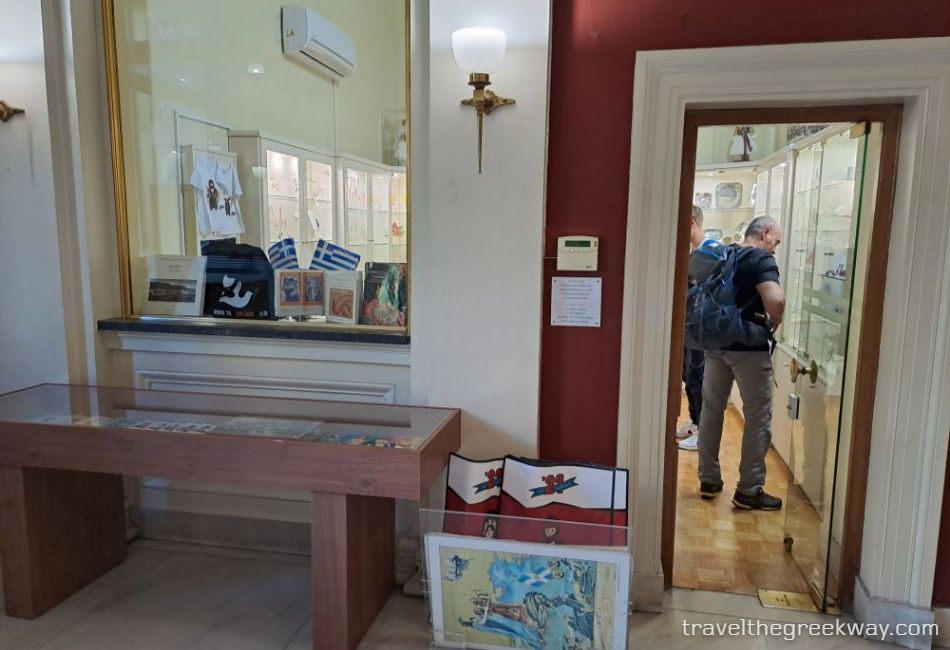
Is the Museum Accessible to People with Disabilities?
For visitors with mobility issues, access to the permanent and temporary exhibition areas is available via a lift.
Visitors with visual impairments can explore the permanent exhibition and touch selected artifacts marked with special signage.
What Facilities are Available for Visitors?
The gift shop offers a great selection of jewelry, accessories, home and office décor, medals, souvenirs, handcrafted lead figurines (toy soldiers), games, and school supplies. There is no cafe inside the museum, but there are plenty of options in the square.
Where should I stay close to the museum?
Just around the corner, on Lekka Street, you can stay in one of the most impressive and beautiful 5-star hotels in Athens, Gatsby Athens.
Enattica Suites are modern, airy, and light apartments with lovely Acropolis views!
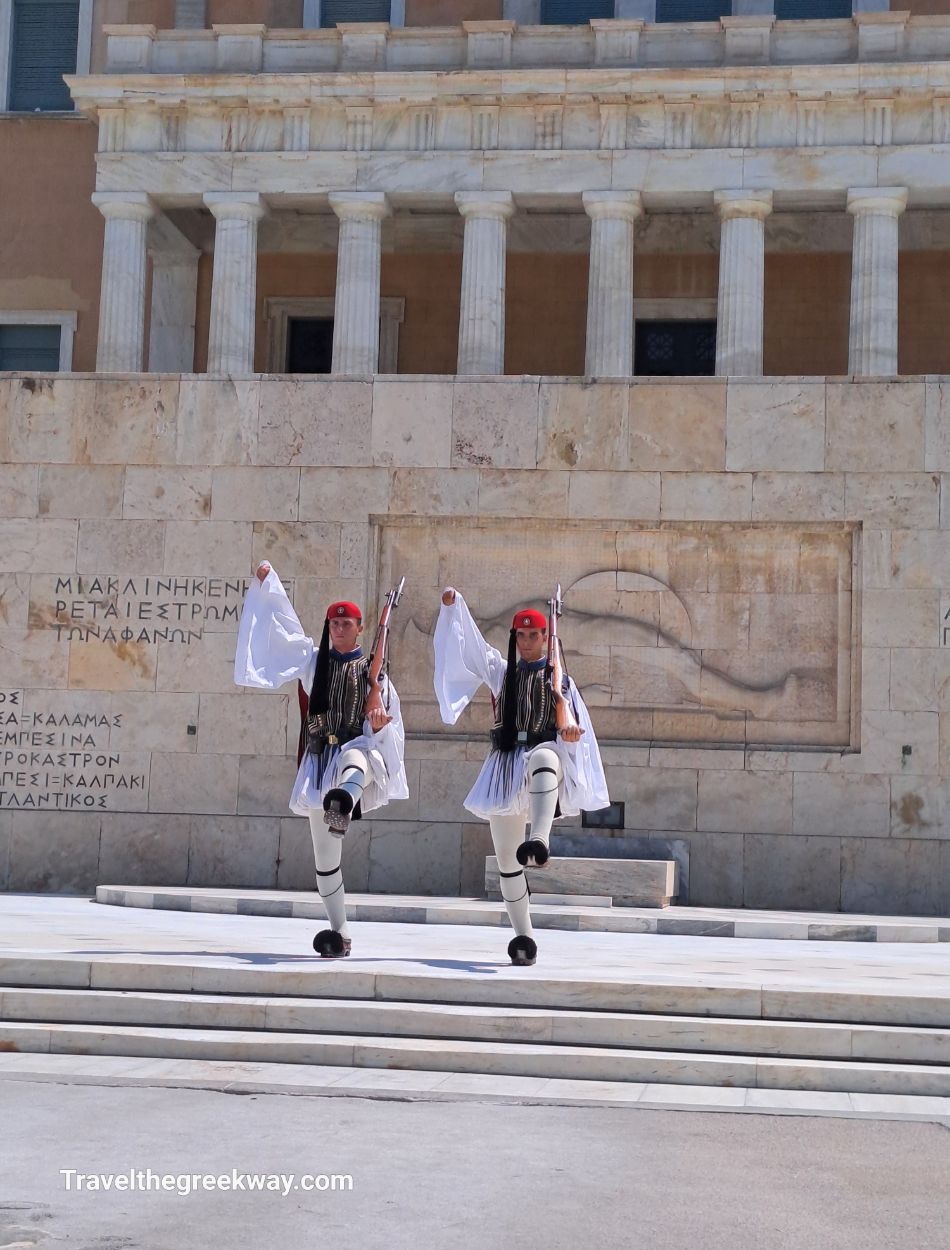
What are the best sites nearby?
Right next to the museum, Kolokotroni Street begins, lined with great restaurants. Syntagma is five minutes away, the Attica Department Store is on Panepistimiou Street, and the upscale Kolonaki area is just 15 minutes away.
Practical Information
- Location: Stadiou 13, Athens (Old Parliament House) at Kolokotroni Square, close to Syntagma
- Official website.
Conclusion
Whether you’re a history enthusiast or just curious about Greece’s past, the National Historical Museum of Athens is a rewarding stop on your journey through this incredible city. Have you visited? Share your experience in the comments. I would love to hear about that!
Join the FB Group & Subscribe to My YouTube Channel!
For more travel to Greece tips and beautiful destinations in the Greek islands please join my FREE Facebook Group or SUBSCRIBE to my YouTube & TikTok channels for amazing videos of Greece! Happy and safe travels, Evgenia.
Essential Resources for Traveling to Greece
- ‘Hello’ and ‘Thank You’ in Greek: “Ya sou” and “Efharisto”
- Booking.com: I use Booking.com mostly for Europe.
- All-Inclusive Resorts in Greece
- FerryScanner to book ferries to the Greek Islands
- Rent an Affordable Car in Greece
- Athens Metro Website (timetables and ticket info)
- Trains (Hellenic Train)
- Public Buses KTEL
- Get Your Guide: For all your day or multi-day tours and city guide needs, I use Get Your Guide
- Emergency Numbers Anywhere in Greece: AMBULANCE 166 – FIRE 199 – POLICE 100– EMERGENCY NUMBER 112
